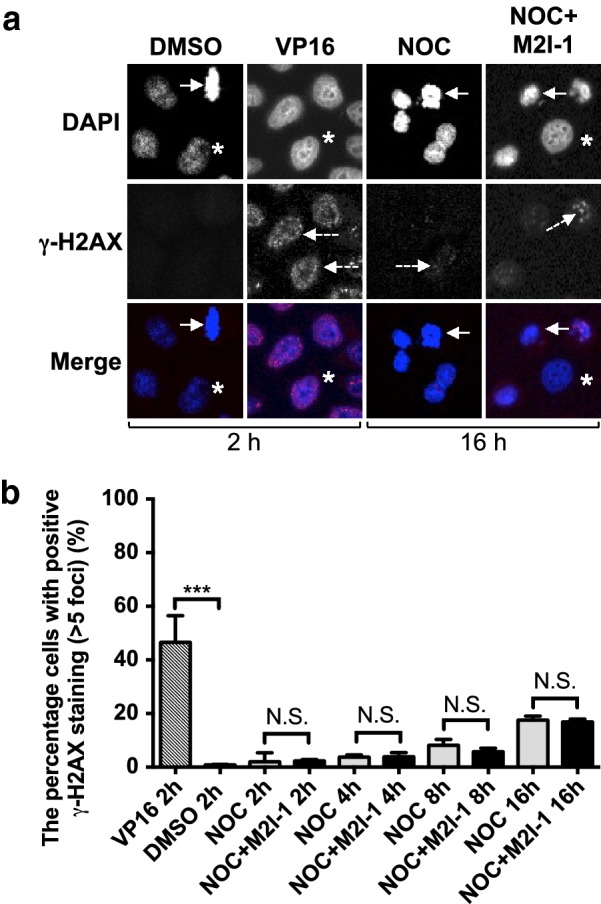Fig. 5.

The comparison of the γ-H2AX foci formation profiles under the different drug treatment conditions. a Representative confocal images showing the γ-H2AX foci formed in HeLa cells at different cell cycle stages. Arrows indicate a metaphase cell treated with 0.5% DMSO for 2 h (negative control), or a prometaphase-like cell from those treated with 60 ng/ml nocodazole (NOC) alone, and 60 ng/ml NOC + 50 μM M2I-1 for 16 h respectively. Cells treated with 10 mM VP16 for 2 h act as a positive control. Asterisks highlight those un-arrested cells after NOC and NOC + M2I-1 treatment or ones from the negative control at a similar cell cycle stage to the VP16 treated cells as justified by their DNA morphologies. These cells were fixed with 4% formamide-PBS solution and stained with a primary anti-γ-H2AX antibody (Abcam, ab-2893, 1:500 dilutions). The specific fluorescent signals of the γ-H2AX foci were illustrated by a Cy5 secondary antibody (Abcam, ab6564, 1:500 dilutions) in red and were indicated by dash line arrows. DNA was stained with DAPI and is shown in blue. b The quantitative results comparing the DNA damage levels indicated by the percentage of cells having more than 5 γ-H2AX foci from the cell population being treated at different time intervals as indicated. Under a 40x oil objective lens, the cells from four or five random areas of the confocal images were taken to give the quantitative results. Three independent experiments were conducted to produce the data. P value *** < 0.003. NS, not significant
